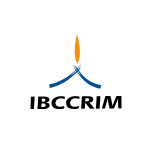Jovens em crossover:
uma análise da interação entre os sistemas de proteção infantil e de justiça juvenil
Vistas: 35DOI:
https://doi.org/10.5281/zenodo.14420054Palabras clave:
Jovens em Crossover, Proteção Infantil, Justiça Juvenil, Interação entre SistemasResumen
Nos últimos anos, tem havido um aumento considerável do interesse em conhecer as vulnerabilidades e os diferentes percursos de desenvolvimento dos jovens envolvidos simultaneamente em ambos os sistemas. Profissionais e investigadores reconhecem há muito tempo que os jovens em Crossover enfrentam riscos significativos relacionados com problemas de saúde mental, abuso de substâncias, dificuldades académicas e interpessoais, mas também o envolvimento precoce na justiça juvenil, a prática de crimes mais violentos, uma taxa mais elevada de reincidência e o enfrentar de detenções e penas mais longas, contribuindo assim para a propensão a cometer crimes. Estes jovens são frequentemente expostos a múltiplos fatores de risco que se sobrepõem e interagem, exacerbando ainda mais as suas vulnerabilidades e criando um ciclo difícil de quebrar. Aliado a isto, reclama-se, igualmente, a necessidade urgente de intervenções preventivas, implementadas de forma colaborativa, que visem mitigar a vulnerabilidade social destes jovens, enfatizando a importância da integração eficaz entre os sistemas de justiça juvenil e os serviços de proteção infantil. É imperativo que estas intervenções sejam desenvolvidas por equipas multidisciplinares que possam abordar de forma holística as diversas necessidades destes jovens. Além disso, é importante que as estratégias adotadas sejam contínuas e adaptáveis, para garantir que proporcionem apoio a longo prazo e ajudem a desenvolver resiliência nos jovens. A partir de uma revisão teórica da literatura, este artigo tem como principal objetivo conhecer as características e dinâmicas dos "crossover", propondo-se ainda ser uma base teórica para investigações futuras sobre o tema. Este estudo pretende fornecer uma visão abrangente e detalhada sobre os desafios e necessidades dos jovens em crossover, promovendo a discussão sobre práticas e políticas que possam melhorar os seus resultados de vida.
Descargas
Publication Facts
Reviewer profiles N/D
Author statements
Indexado: {$indexList}
- Academic society
- Instituto Brasileiro de Ciências Criminais
- Editora:
- Editora Revista dos Tribunais (RT)
Citas
Altschuler, D., Stangler, G., Berkley, K., & Burton, L. (2009). Supporting youth in transition to adulthood: Lessons learned from child welfare and juvenile justice. Washington, DC: Center for Juvenile Justice Reform and Jim Casey Youth Opportunities Initiative. http://cjjr.georgetown.edu/pdfs/TransitionPaperFinal.pdf
American Bar Association (2008). ABA policy and report on crossover and dual jurisdiction youth. Retrieved April 4, 2014. http://www.njjn.org/uploads/digital-library/resource_671.pdf.
Bala, N., Finlay, J., De Filippis, R., & Hunter, K. (2015a). Child welfare adolescents & the youth justice system: Failing to respond effectively to crossover youth. Canadian Criminal Law Review, 19(1), 129-151. https://www.proquest.com/scholarly-journals/child-welfare-adolescents-youth-justice-system/docview/1706582541/se-2
Bala, N., Filippis, R., & Hunter, K. (2015b). Crossover Youth: Improving Ontario´s Responses. https://afccontario.ca/wp-content/uploads/2015/11/Bala-De-Filippis-Hunter-Crossover-Kids.pdf
Bogie, A., Johnson, K., Ereth, J., & Scharenbroch, C. (2011). Assessing risk of future delinquency among children receiving child protection services. http://www.nccdglobal.org/sites/default/files/publication_pdf/la_delinquency_screening_assessment_report.pdf
Campbell C., Breanna Lowrance Clark, Jordan Papp, Eurielle Kiki, William Miller, Luis Guiterrez, Francis Boateng & Cindy Crusto (2023) Crossover youth and juvenile justice: an examination of criminogenic risk and needs for offenders with child welfare history using the Ohio Youth Assessment System, Journal of Offender Rehabilitation, 62:8, 483-500. https://doi.org/10.1080/10509674.2023.2261914
Carvalho, M. J. L. (2018). A Privação de Liberdade no Contexto da Justiça Juvenil em Portugal: Tensões, Riscos e Desafios. In M. Alcántara, M. García Montero , & F. Sánchez López (Eds.), Memoria del 56.º Congreso Internacional de Americanistas: Estudios sociales (Vol. 12, pp. 748-759). Ediciones Universidad de Salamanca. Portugal: Tensões, Riscos e Desafios. In M. Alcántara, M. García Montero , & F. Sánchez. https://research.unl.pt/ws/portalfiles/portal/16150497/2018_A_priva_o_de_liberdade_no_contexto_da_justi_a_juvenil_em_Portugal.pdf
Castro, J. (2010). “The punitive turn” - are there any points of resistance? An answer from the portuguese experience. In Cartuyvels, Y. & Bailleau, F (Eds.). The Criminalization of Youth. Juvenile Justice in Europe, Turkey and Canada.VUBPress
Chiodo, D., Leschied, P. C., Whitehead, P. C., & Hurley, D. (2008, May). Child welfare practice and policy related to the impact of children experiencing physical victimization and domestic violence. Children and Youth Services Review, 30(5), 564–574. 10.1016/j.childyouth.2007.11.008
Cho, M., Haight, W., Choi, W. S., Hong, S., & Piescher, K. (2019). A prospective, longitudinal study of risk factors for early onset of delinquency among maltreated youth. Children and Youth Services Review, 102, 222-230.
Chuang, E. & Wells, R. (2010). The role of inter-agency collaboration in facilitating receipt of behavioral health services for youth involved with child welfare and juvenile justice. Children and Youth Services Review, 32, 1814-1822. 10.1016/j.childyouth.2010.08.002
Conger, D. & Ross, T. (2006). Project Confirm: An outcome evaluation of a program for children in the child welfare and juvenile justice systems. Youth Violence and Juvenile Justice, 4, 97-115. https://doi.org/10.1177/1541204005282314
Cutuli, J. J., Goerge, R. M., Coulton, C., Schretzman, M., Crampton, D., Charvat, B. J., & Lee, E. L. (2016). From foster care to juvenile justice: Exploring characteristics of youth in three cities. Children and youth services review, 67, 84-94.
Dannerbeck, A., & Yan, J. (2011). Missouri’s crossover youth: Examining the relationship between their maltreatment history and risk of violence. https://www.ojp.gov/pdffiles/236317.pdf
Diogo, E., Sacur, B., & Guerra, P. (2022). Caminhos para uma reforma do sistema de promoção e proteção das crianças e jovens - recomendações. Temas Sociais, 3(3), 31-51. http://hdl.handle.net/10400.14/39991
Fazel, S., Doll, H., & Långström, N. (2008). Mental disorders among adolescents in juvenile deten- tion and correctional facilities: A systematic review and metaregression analysis of 25 surveys. Journal of the American Academy of Child and Adolescent Psychiatry, 47, 1010–1019. http:// dx.doi.org/10.1097/CHI.0b013e31817eecf3
Flores, J. (2013). "Staff Here Let You Get Down”: The cultivation and co-optation of violence in a California juvenile detention center. Signs: Journal of Women in Culture and Society, 39(1), 221–241. https://doi.org/10.1086/670771
Flores, J., Hawes, J., Westbrooks, A., & Henderson, C. (2018). Crossover youth and gender: What are the challenges of girls involved in both the foster care and juvenile justice systems? Children and Youth Services Review, 91, 149–155. https://doi.org/10.1016/j.childyouth.2018.05.031
Garbarino, J. (1999). Lost boys: Why our sons turn violent and how we can save them. New York, NY: The Free Press. 10.1093/pch/10.8.447
Griffin, A. (2014). Dually Involved Youth: Exploring Child Welfare Involvement, Maltreatment, and Offensive Severity.
Goodkind, S., Shook, J.J., Kim, K.H., Pohlig, R.T., & Herring, D.J. (2013). From child welfare to juvenile justice: Race, gender, and system experiences. Youth Violence and Juvenile Justice, 11(3), 249-272. https://doi.org/10.1177/1541204012463409
Guerra, Paulo, “Reflexões Sobre o Sistema Legal de Promoção e Proteção de Crianças e Jovens” in Atores e Dinâmicas no Sistema de Promoção e Proteção de Crianças e Jovens, Rita Francisco e Helena Rebelo (coord.), Universidade Católica Editora, 2021.
Haight, Wendy & Bidwell, Laurel & Choi, Won Seok & Cho, Minhae. (2016). An evaluation of the Crossover Youth Practice Model (CYPM): Recidivism outcomes for maltreated youth involved in the juvenile justice system. Children and Youth Services Review. https://doi.org/10.1016/j.childyouth.2016.03.025
Halemba, G. & Seigel, G. (2011). The King County uniting for youth cross system prevalence. Pittsburgh, PA: National Center for Juvenile Justice. https://www.modelsforchange.net/publications/304/Doorways_to_Delinquency_MultiSystem_Involvement_of_Delinquent_Youth_in_King_County_Seattle_WA.pdf
Herz, D. C., & Ryan, J. P. (2008). Building multisystem approaches in child welfare and juvenile justice: Casey family programs.
Herz, D.C., Ryan, J.P., & Bilchik, S.K. (2010). Challenges facing crossover youth: An examination of juvenile-justice decision making and recidivism. Family Court Review, 48(2), 305-321. 10.1111/j.1744-1617.2010.01312.x
Herz, D. C., Lee, P., Lutz, L., Steward, M., tuell, J., & Wiig, J. (2012). Addressing the needs of multi-system youth: Strengthening the connection between child welfare and juvenile justice. https://www.njjn.org/uploads/digital-library/Addressing-the-Needs-of-MultiSystem-Youth-Strengthening-the-Connection-between-Child-Welfare-and-Juvenile-Justice-CJJR-3.1.12.pdf
Herz, D. C., Eastman, A. L., Putnam-Hornstein, E., & McCroskey, J. (2021). Dual system youth and their pathways in Los Angeles County: a replication of the OJJDP system youth study. Child Abuse & Neglect, 118, 105160. https://doi.org/10.1016/j.chiabu. 2021.105160
Irvine, A., & Canfield, A. (2016). The overrepresentation of lesbian, gay, bisexual, questioning, gender nonconforming and transgen- der youth within the child welfare to juvenile justice crossover population. Journal on Gender, Social Policy, and the Law, 24(2), 243–261
Jonson-Reid, M. & Barth R. (2000). From placement to prison: The path to adolescent incarceration from child welfare supervised foster or group care. Children and Youth Services Review, 22, 493- 516. https://doi.org/10.1016/S0190-7409(00)00100-6
Jonson-Reid, M. (2002). Exploring the relationship between child welfare intervention and juvenile corrections involvement. American Journal of Orthopsychiatry, 72, 559-576. https://doi.org/10.1037/0002-9432.72.4.559
Jonson-Reid, M., Kohl, P.L., & Drake, B. 2012. Child and adult outcomes of chronic child maltreatment. Pediatrics 129,839-845. 10.1542/peds.2011-2529
Kerig, P. K. (2018). Polyvictimization and Girls’ Involvement in the Juvenile Justice System: Investigating Gender-Differentiated Patterns of Risk, Recidivism, and Resilience. Journal of Interpersonal Violence, 33(5), 789-809. https://doi.org/10.1177/0886260517744843
Kilpatrick, D. G., Ruggiero, K. J., Acierno, R., Saunders, B. E., Resnick, H. S., & Best, C. L. (2003). Violence and risk of PTSD, major depression, substance abuse/dependence, and comorbidity: Results from the national survey of adolescents. Journal of Consulting and Clinical Psychology, 71(4), 692–700. https://doi.org/10.1037/0022-006x.71.4.692
Kim, K. (2012). The role of culture in theories of the intergenerational transmission of violence. Child and Family Social Work, 395–405. https://doi.org/10.1111/j.1365-2206.2011.00793.x
Lutz, L., Stewart, M., Legters, L. & Herz, D. (2009). Crossover youth practice model. Washington, DC: Center for Juvenile Justice Reform and Casey Family Programs.
Malvaso, C. G., Delfabbro, P. H., & Day, A. (2016). Risk factors that influence the maltreatment-offending association: A systematic review of prospective and longitudinal studies. Aggression and violent behavior, 31, 1-15.
Modrowski, C. A., Chaplo, S. D., & Kerig, P. K. (2022). Advancing our understanding of the risk factors associated with crossover youth in the child welfare and juvenile justice systems: A trauma-informed research agenda. Clinical child and family psychology review, 25(2), 283-299.Ødegård, A. (2005). Perceptions of interprofessional collaboration in relation to children with mental health problems. Journal of Interprofessional Care, 19(4), 347–357. 10.1080/13561820500148437
Pinto J, Fernandes A, Mesquita C, Maia Â. (2015) Childhood Adversity Among Institutionalized Male Juvenile Offenders and Other High-Risk Groups Without Offense Records in Portugal. Violence Vict. 2015;30(4):600-14. 10.1891/0886-6708.VV-D-13-00002
Reeves, S., Lewin, S., Espin, S., & Zwarenstein, M. (2010). Interprofessional teamwork for health and social care: Promoting partnership for health. Chichester, UK: Wiley- Blackwell. 10.1002/9781444325027.FMATTER
Rollins, B. C., & Thomas, D. L. (1979). Parental support, power, and control techniques in the socialization of children. In W. R. Bur, R. Hill, F. I. Nye, & I. L. Reiss (Eds.), Contemporary theories about the family (Vol. 1, pp. 317–364).
Ross, T., Conger, D., & Armstrong, M. (2002). Bridging child welfare and juvenile justice: Preventing unnecessary detention of foster children. Child Welfare, 81, 471-494.
Ryan, J.P. & Testa, M.F. (2005). Child maltreatment and juvenile delinquency: Investigating the role of placement and placement stability. Children and Youth Services Review, 27, 227-249. https://doi.org/10.1016/j.childyouth.2004.05.007
Ryan, J.P., Herz, D. Hernandez, P.M., & Marshall, J.M. (2007). Maltreatment and delinquency: investigating child welfare bias in juvenile justice. Children and Youth Services Review, 29, 1035-1050. https://doi.org/10.1016/j.childyouth.2007.04.002
Ryan, J.P., Marshall, J.M., Herz, D., & Hernandez, P.M. (2008). Juvenile delinquency in child welfare: Investigating group home effects. Children and Youth Services Review, 30, 1088-1099. https://doi.org/10.1016/j.childyouth.2008.02.004
Saia, Koidu & Toros, Karmen & DiNitto, Diana. (2020). Interprofessional collaboration in social rehabilitation services for dually-involved Estonian youth: Perceptions of youth, parents, and professionals. Children and Youth Services Review. 113. https://doi.org/10.1016/j.childyouth.2020.104945
Siegel, G. & Lord, R. (2004). When systems collide: Improving court practices and programs in dual jurisdiction cases. Retrieved March 17, 2014, from http://www.ncjj.org/PDF/dualjurisdiction.pdf.
Simmons-Horton, Sherri. (2021). “A Bad Combination”: Lived Experiences of Youth Involved in the Foster Care and Juvenile Justice Systems. Child and Adolescent Social Work Journal. 38. 10.1007/s10560-020-00693-1
Stewart, A., Livingston, M. & Waterson, E. (2008). Transitions and turning points: Examining the links between child maltreatment and juvenile offending. Child Abuse & Neglect, 32, 51-66. 10.1016/j.chiabu.2007.04.011
Verrecchia, P.J., Fetzer, M.D., Lemmon, J.H., & Austin, T.L. (2010). An examination of direct and indirect effects of maltreatment dimensions and other ecological risks on persistent youth offending. Criminal Justice Review, 35, 220-243. 10.1177/0734016809360327
White, L. O., Klein, A. M., Kirschbaum, C., Kurz-Adam, M., Uhr, M., Müller-Myhsok, B., et al. (2015). Analyzing pathways from childhood maltreatment to internalizing symptoms and disorders in children and adolescents (AMIS): a study protocol. BMC Psychiatry, 1-18. 10.1186/s12888-015-0512-z
Wiig, J. (2003). Understanding child maltreatment and juvenile delinquency: Foundations for effective response. In Wiig, J., Widom, C.S., & Tuell, J.A., Understanding Child Maltreatment and Juvenile Delinquency: From Research to Effective Program, Practice, and Systemic Solutions. Washington, DC: Child Welfare League of America, Inc. https://rfknrcjj.org/images/PDFs/Understanding_Child_Maltreatment_and_Juvenile_Delinquency_From_Research_to_Effective_Program_Practice_and_Systemic_Solutions.pdf
Wiig, J. & Tuell, J.A. (2013). Guidebook for juvenile justice and child welfare system coordination and integration. Boston: Robert F. Kennedy Children’s Action Corps. https://www.njjn.org/uploads/digital-library/MfC_Guidebook-for-JJ-CW-Crossover-Youth_March-2014.pdf
Yampolskaya, S., Armstrong, M. I., & McNeish, R. (2011). Children placed in out-of-home care: Risk factors for involvement with the juvenile justice system. Violence and victims, 26(2), 231-245.
Yessine, A. (2011). Risk factors for delinquency among Canadian youth: Current knowledge and future directions. Public Safety Canada. https://www.publicsafety.gc.ca/lbrr/archives/cn24502-eng.pdf
Young, D., Bowley, A., Bilanin, J., & Ho, A. (2015). Traversing two systems: An assessment of crossover youth in Maryland. Retrieved from the National Criminal Justice Reference Service website: https://www.ojp.gov/pdffiles1/nij/grants/248679.pdf
Descargas
Publicado
Cómo citar
Número
Sección
Licencia
Os direitos autorais dos artigos publicados são do autor, com direitos do periódico sobre a primeira publicação.
Os autores somente poderão utilizar os mesmos resultados em outras publicações indicando claramente este periódico como o meio da publicação original. Se não houver tal indicação, considerar-se-á situação de autoplágio.
Portanto, a reprodução, total ou parcial, dos artigos aqui publicados fica sujeita à expressa menção da procedência de sua publicação neste periódico, citando-se o volume e o número dessa publicação. Para efeitos legais, deve ser consignada a fonte de publicação original.



 Português (Brasil)
Português (Brasil)
 English
English
 Español (España)
Español (España)












 Assine a Revista:
Assine a Revista: 

